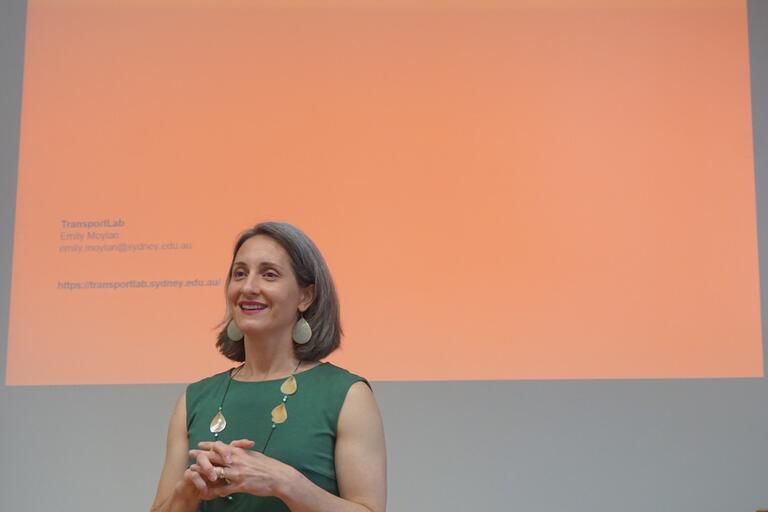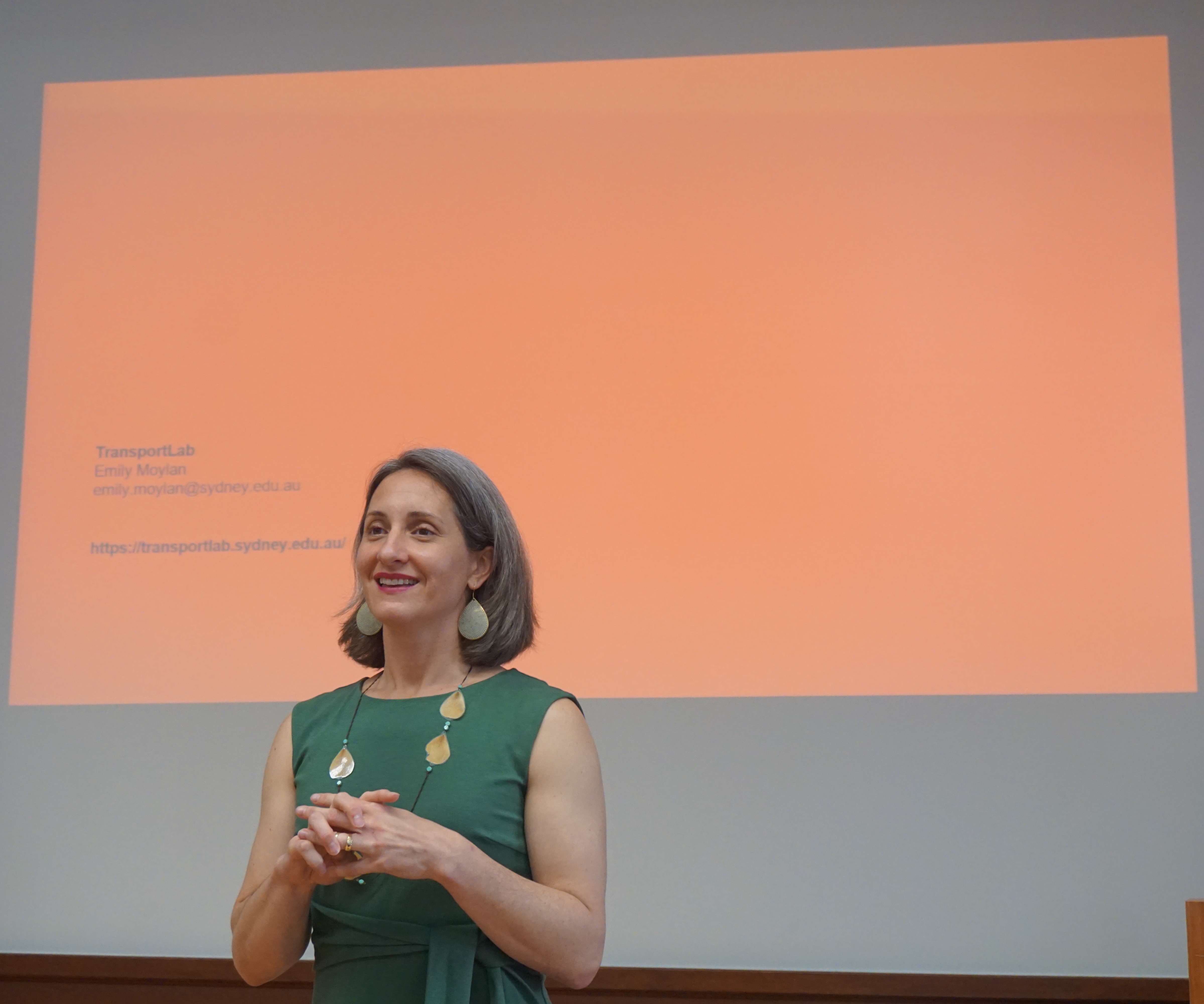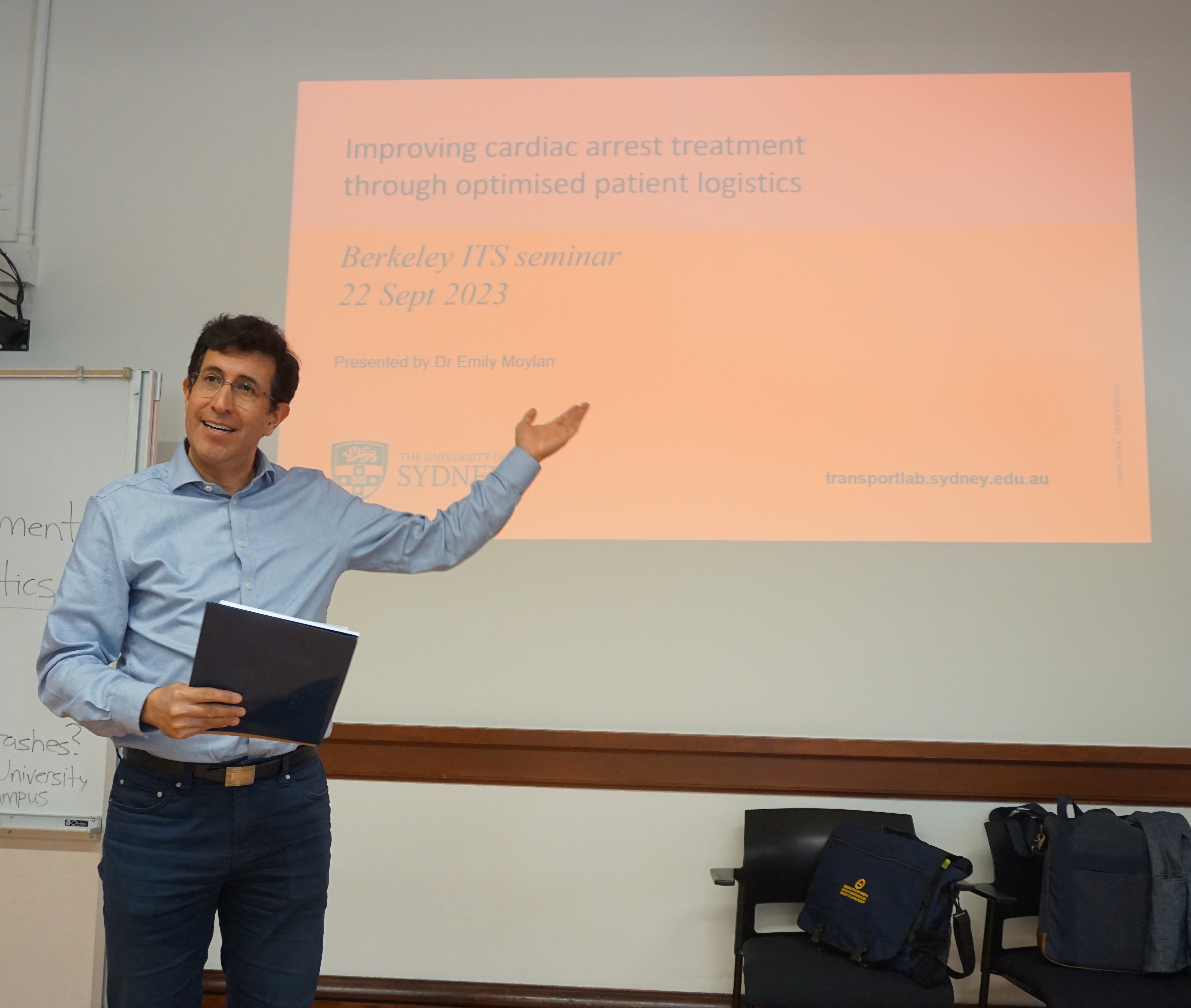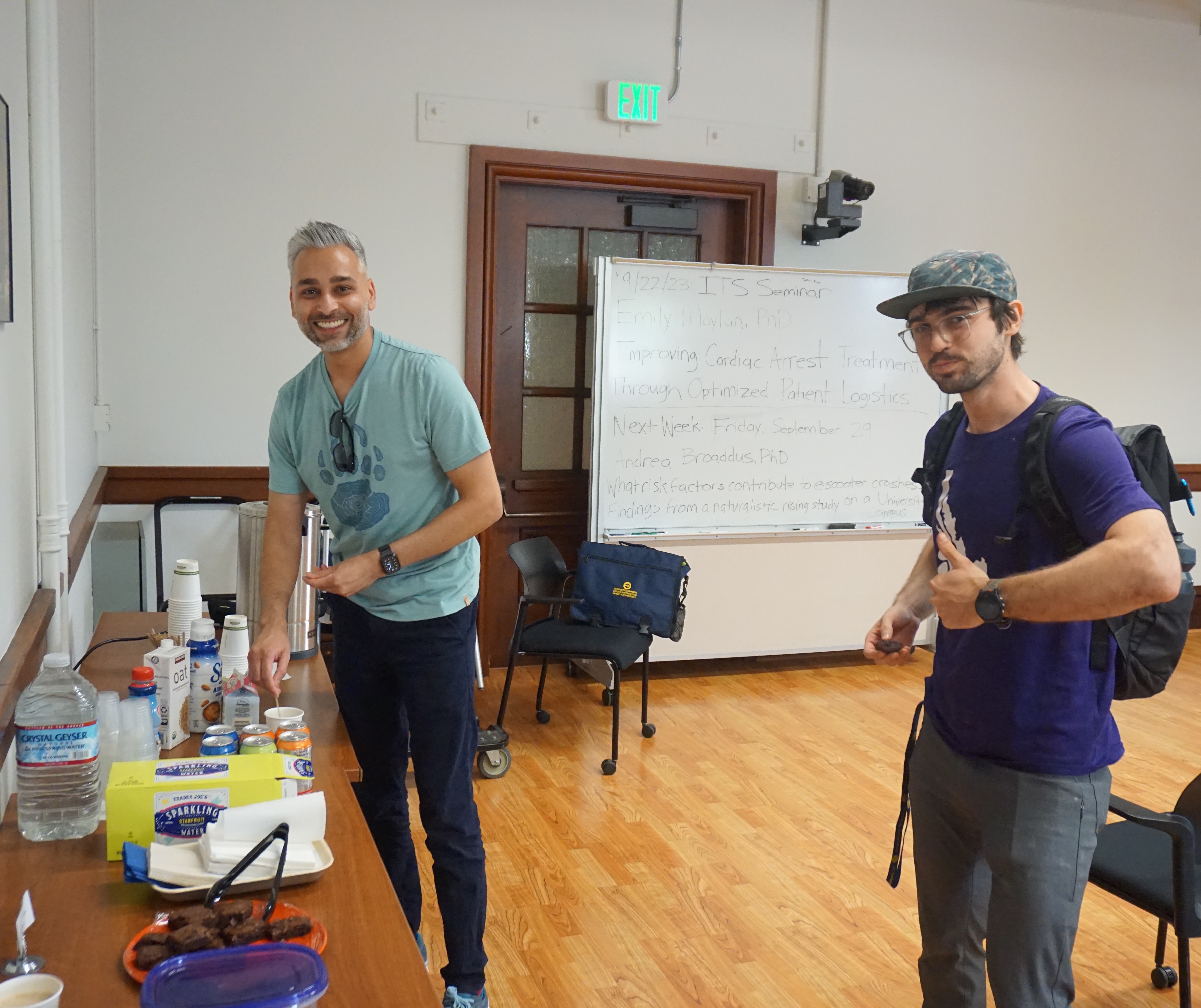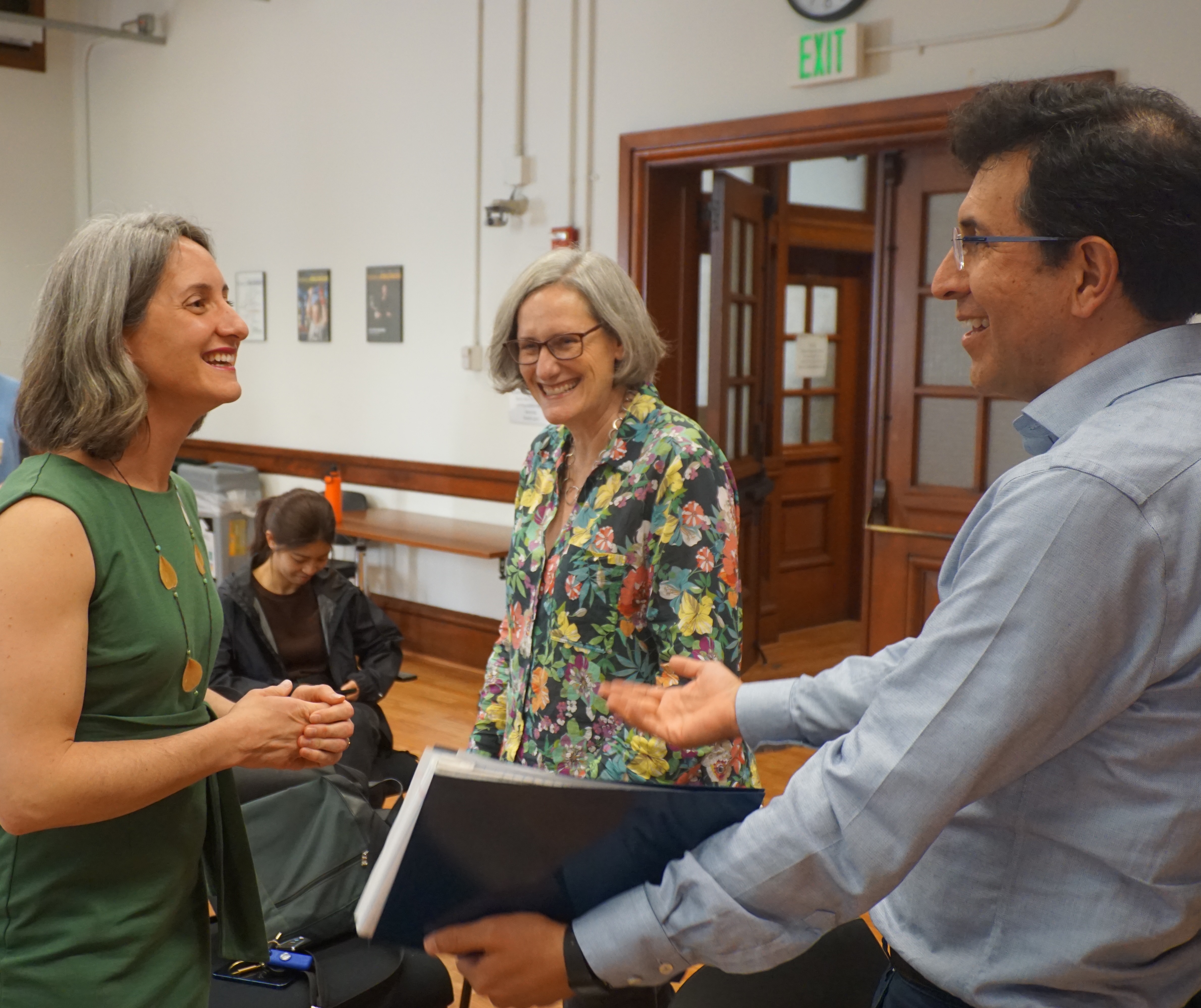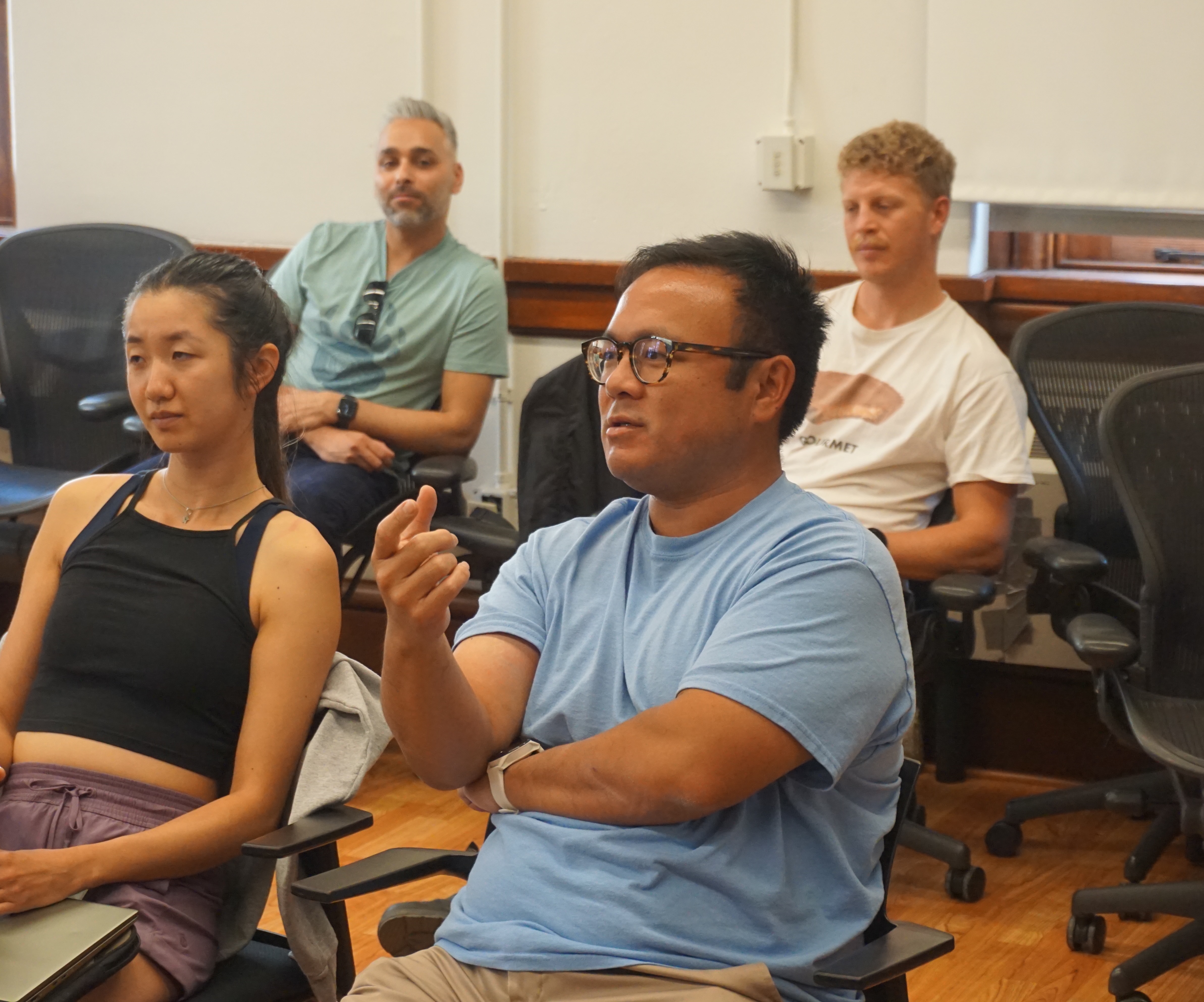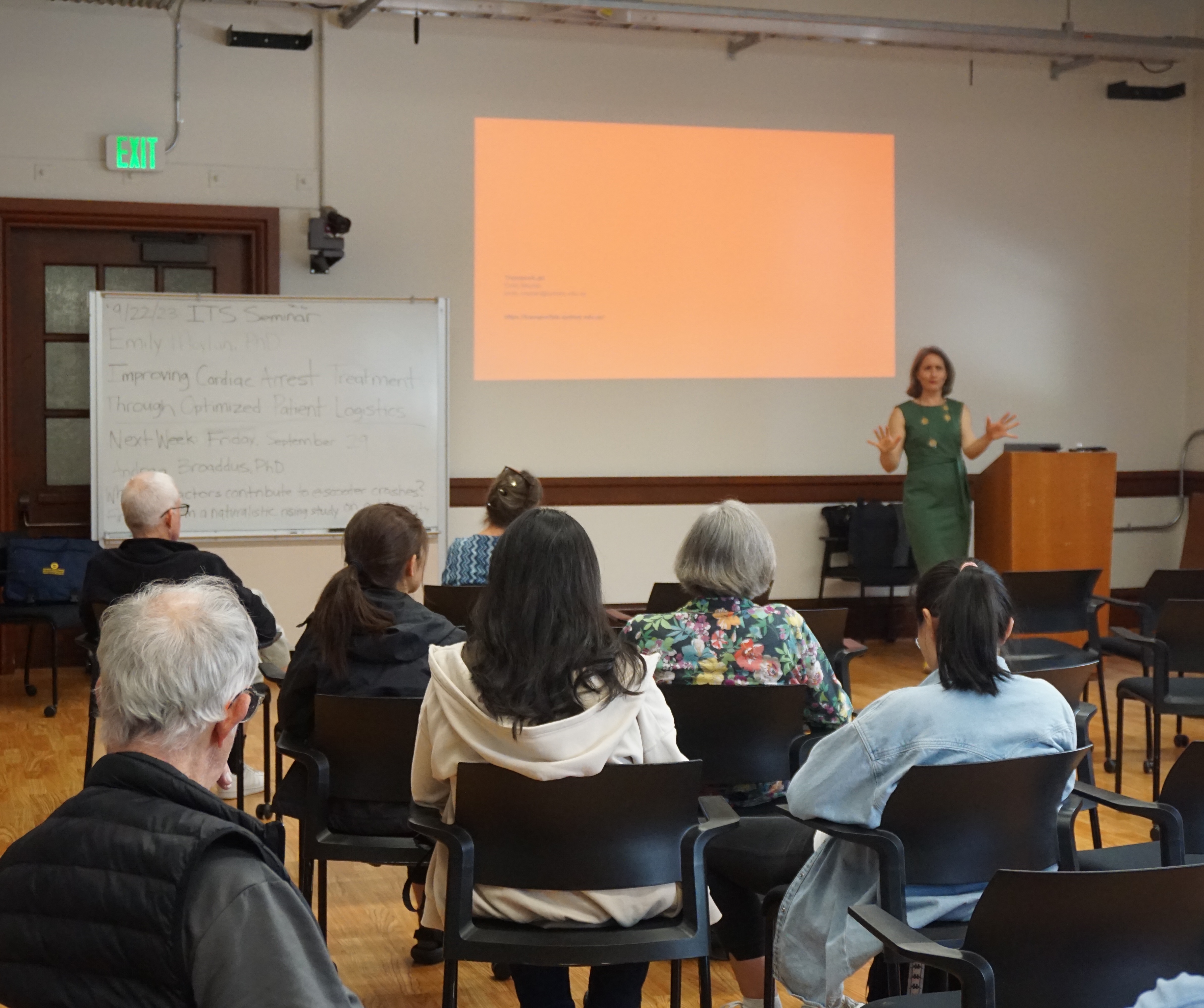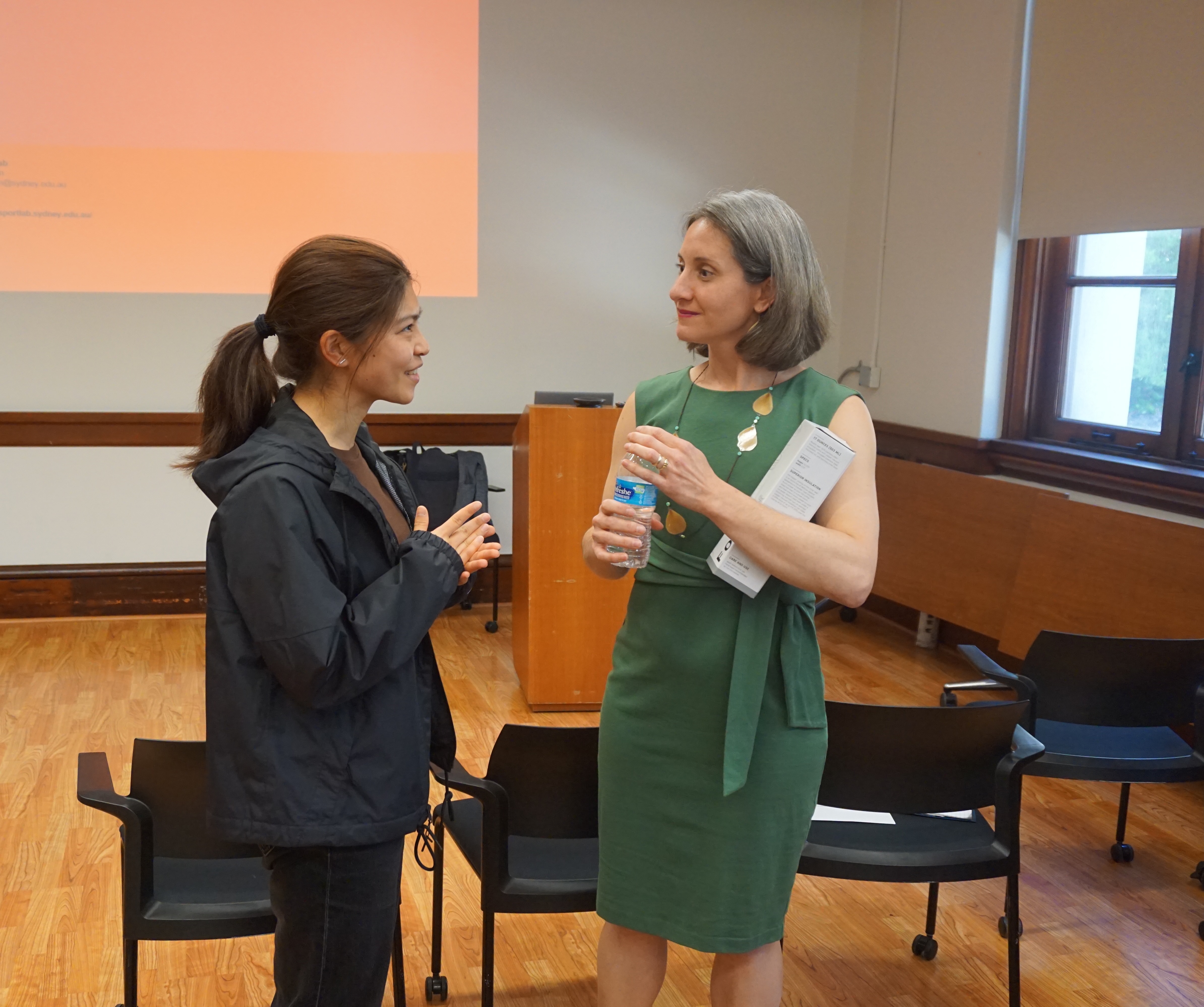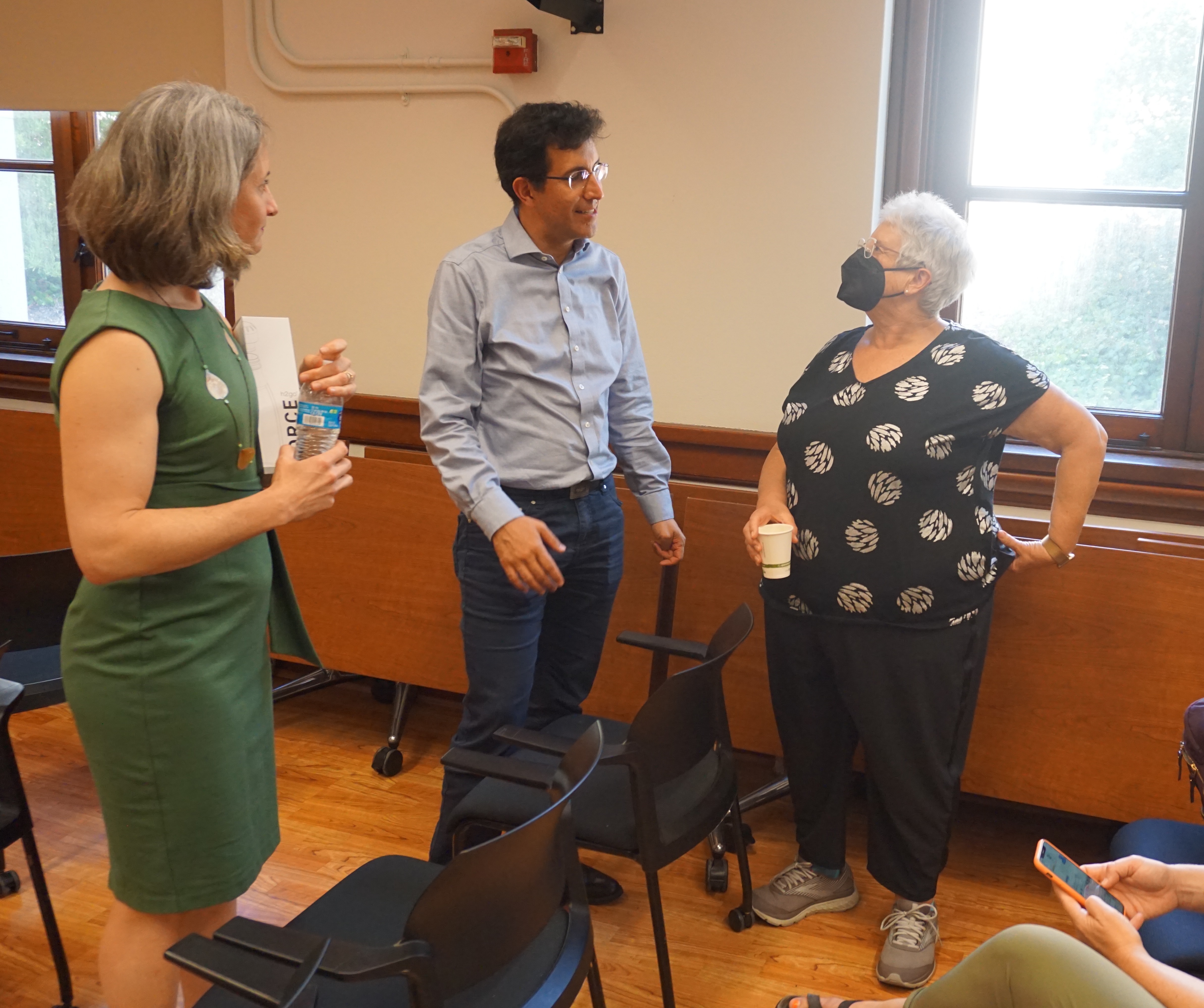September 22, 2023
Thank you to Emily Moylan, Senior Lecturer in Transport at the School of Civil Engineering, University of Sydney, who presented Improving Cardiac Arrest Treatment Through Optimized Patient Logistics at the Transportation Seminar Sept. 22, 2023.
Abstract: A common problem in emergency healthcare logistics is maximizing coverage of a scarce resource through optimal facility location. Optimization of the locations of facilities can improve both the quality and extent of the coverage and can be further enhanced by defining better objective functions or using alternative delivery strategies to get emergency equipment and personnel to patients sooner.
In this research, we examine three service delivery strategies, including a novel rendezvous strategy, to improve treatment of cardiac arrest. Because the treatment success is time sensitive, an impedance function quantifies the quality of the coverage. The approach is applied to an emerging treatment for cardiac arrest where scarce resources/personnel should be optimally allocated to maximize the benefit to patients. As the scale of the problem grows under alternative delivery models, different optimization approaches are benchmarked against the enumerated solutions.
The coverage area significantly increases under the novel strategies compared to a traditional model of retrieving the patient to the hospital. Quantitatively better facility location combinations are identified using a maximal survival rather than a maximal coverage approach, which has direct implications for patient health outcomes. We discuss the way these findings have influenced recent health policy changes in New South Wales, Australia.
Bio: Emily Moylan is a Senior Lecturer in Transport at the School of Civil Engineering, University of Sydney, where she is leading a research program in the stochasticity of transport system performance. Emily’s research builds on data from many sources including road traffic counters, pedestrian delays, Google Maps API, and transit smart cards to understand the complexity and variability in the way that people move around urban spaces. Her work includes translational research funded by Transport for New South Wales, NSW Health, NSW Dept of Planning and Environment, and Office for Road Safety. After completing her PhD in Galaxy Dynamics at ANU in 2011, she completed her MS/MCP degrees in Transport at University of California, Berkeley. From 2014-2018, she was a research associate at the Research Centre for Integrated Transport Innovation at UNSW Sydney.

